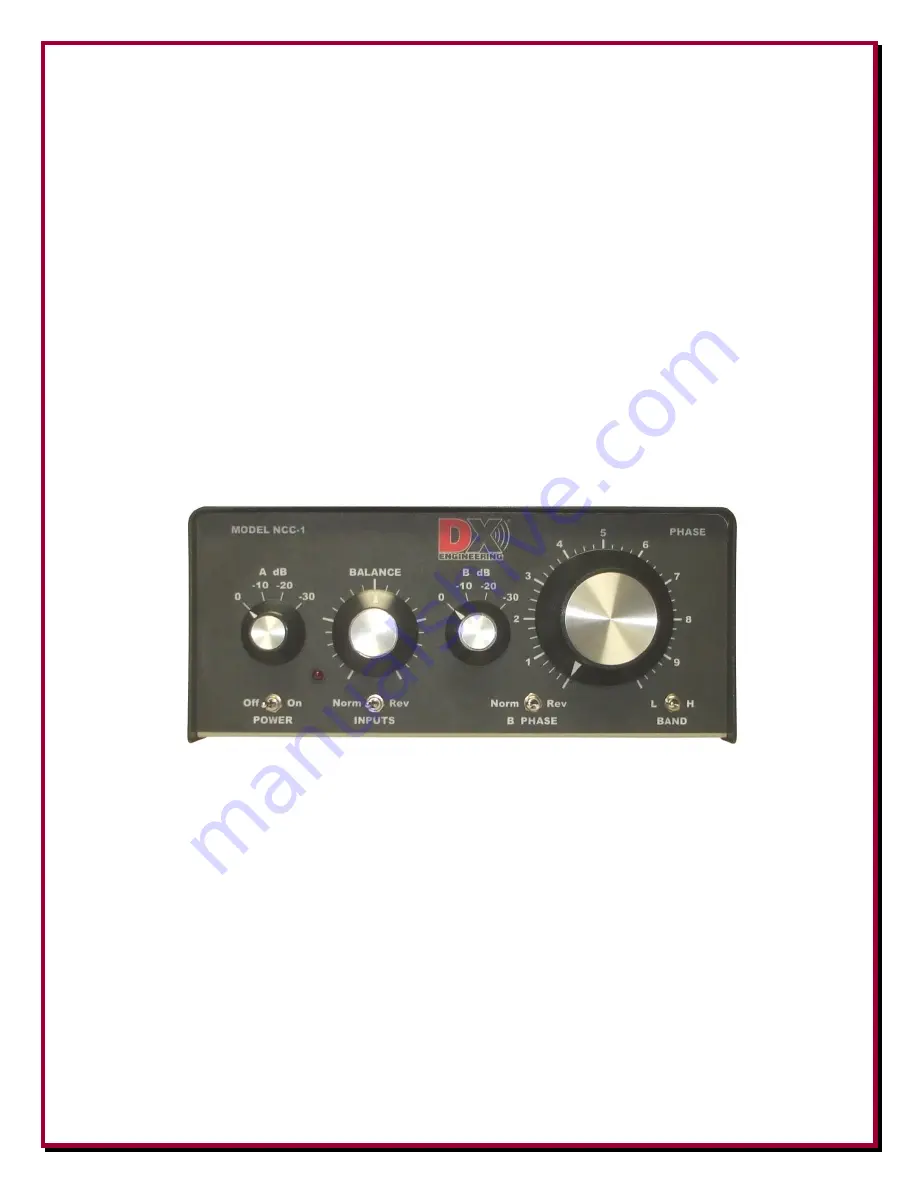
- 24 -
Operating the Receive Phasing System
Now that everything is correctly installed and all the cables are properly connected, let's run through
a typical operation:
1. Connect the
NCC-1
to your station and a suitable power source.
2. Set the front panel controls as follows:
Both A and B attenuator switches to the 0 dB position, unless one antenna requires more
preset attenuation
BALANCE control to the center position, the knob indicator line should be centered
vertically
PHASE control rotated to zero position
INPUTS switch to NORM
B PHASE NORM-REV switch set to NORM
BAND switch to L for operation below 5-10 MHz or H for operation above 5-10 MHz. In
the range of 5-10 MHz, either setting may work
POWER On
To get the best rejection of unwanted signals or noise, rotate the PHASE control until the noise or
interference is at the lowest level. If a null cannot be found, change the PHASE NORM/REV switch
to the REV position. The null might be shallow until levels are balanced.
Adjust the BALANCE control to further reduce noise or interference. It may be necessary to go
back and forth between PHASE and BALANCE controls a few times. If the BALANCE control is
not within 90 degrees of the center position, apply attenuation to the opposite side the BALANCE
pointer is on. This should center the BALANCE control indicator line.
Often a little experimentation is required to get the best performance using and understanding of
antennas and phase relationships. You can also reverse directions by changing INPUT A and
INPUT B using the INPUT switch. This switch is most useful when elements are in line with
desired or undesired directions, but there are cases where it can extend phase range and aid in
achieving a better null.
Содержание DXE-AAPS3-1P
Страница 21: ...21 Typical HF Set Up...
Страница 22: ...22 Typical HF System Set Up with an HF Amplifier and using the DXE TVSU 1A...
Страница 23: ...23 Typical SWL or Broadcast AM DX System Set Up...





































